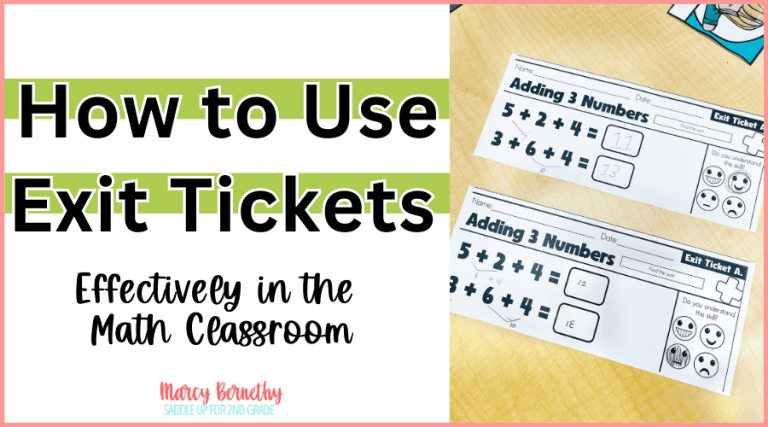

Join me for a FREE, Guided Math workshop to discover how to easily incorporate Guided Math into your current schedule!
The second half of the school year is almost here. Let’s hope 2021 turns out much better than 2020. It doesn’t matter if you are teaching in person or virtual, the return after Christmas break always brings some challenges, especially with math centers and small groups. In some ways, it’s almost like the first day of school all over again. If you teach guided math and small groups in your math block, you might have the urge to jump right back into how things were going before. But from my experience, it doesn’t always go so well. Today I’m going to be sharing 5 tips for kickstarting math centers and small groups after winter break.
This blog post contains affiliate links. You can see my disclosure here.

One of my favorite things to do as a new semester approaches is to reflect on the past few months in the classroom. It’s important to take time to look back at the variety of activities you used and see what worked and didn’t work in the past. This is the best thing you can do to ensure you are setting up meaningful practice to suit the needs of the students in your class.
After looking back, then you can establish what you want to keep that is working and what things you want to change that aren’t working. Maybe your students need a little more differentiation and now is a great time to start that! Especially in this day and age maybe you are wanting to incorporate new technology programs or learn how to use Boom Cards with your students! Having a technology center as part of your math instruction will increase participation and make math fun for students.
Don’t be afraid to change things up after reflecting try new types of activities for your math centers or math stations! Setting up meaningful AND fun math centers will make your life easier.
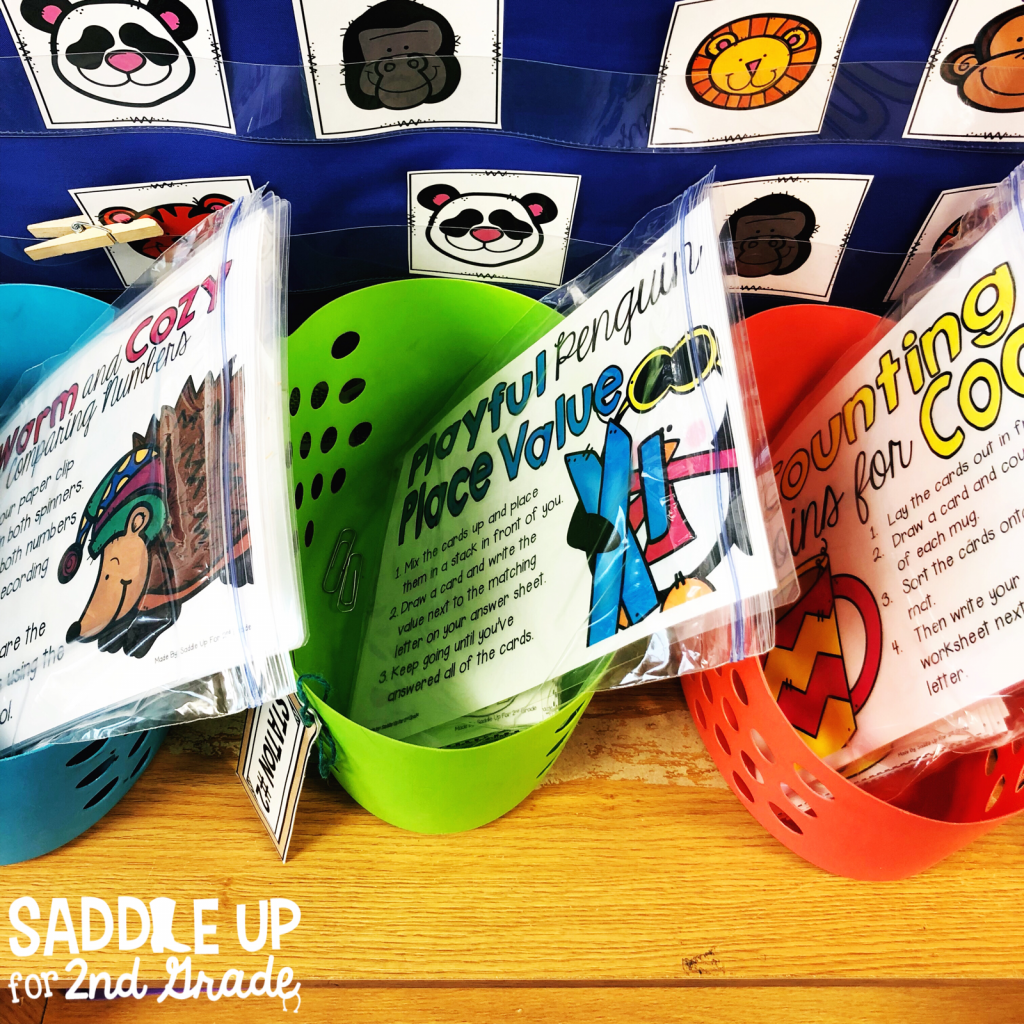
Think about what you want your students to learn during this specific nine weeks. Take a look at your long range plans and see what you can prepare ahead of time. Prepping ahead allows you to think about what specific standards you will be teaching throughout the month of January. By doing so, you will be able help your students reach those learning targets faster! For example, if you are using my Winter Math Centers/Stations, make sure you have enough copies of each task card, practice sheets, and recording sheet for each of your math centers or stations! Setting up your math tubs ahead of time is a great way to save you a lot of stress in the New Year.
In order to successfully teach math small groups, you will want to prep materials for new skills that your students will be learning. Before jumping into the new math concepts, make sure to set aside extra time to review math concepts taught at the beginning of the school year. Students will forget everything you’ve taught them before the holiday break so an in-depth review might be necessary for many!
Prior to returning, know what kind of math center activities you want your students to practice and get them prepped ahead of time. Now is a good time to find your math centers and small group materials and begin going through them. If you are using Galloon Ziploc Bags to store your materials, this could be a great time to begin switching them over to large poly zip folders! Pull those math task cards and math manipulatives out and see if anything is bent or needs to be reprinted before students arrive.
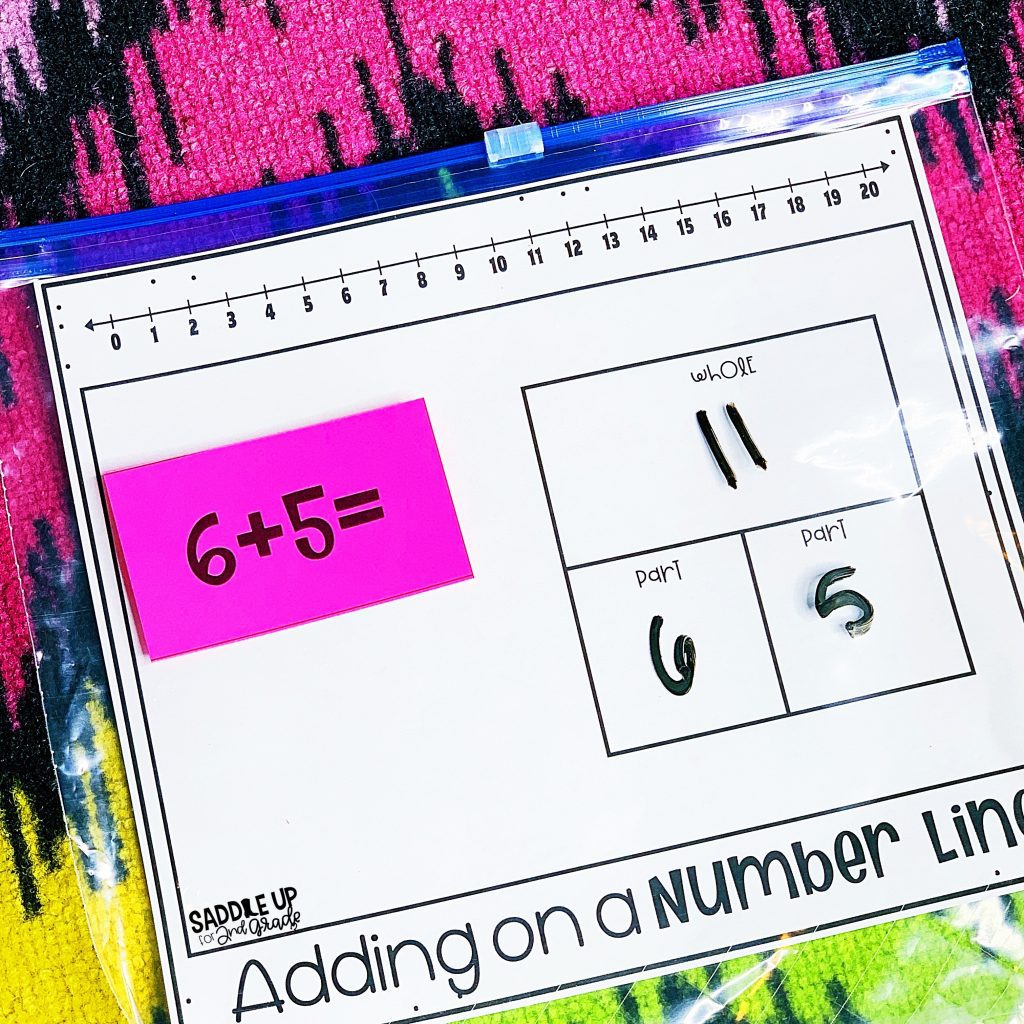
Make sure your math center or station area is set up and ready to go for the new year! If it’s looking like a hot mess, like mine, it’s time to go in and restock commonly used manipulatives and supplies. Take time to straighten any baskets, clean and sanitize items, and sort through old dry erase markers that don’t work anymore. It’s a good idea to have your classroom look nice and inviting after the break, just as you would on the first day of school.
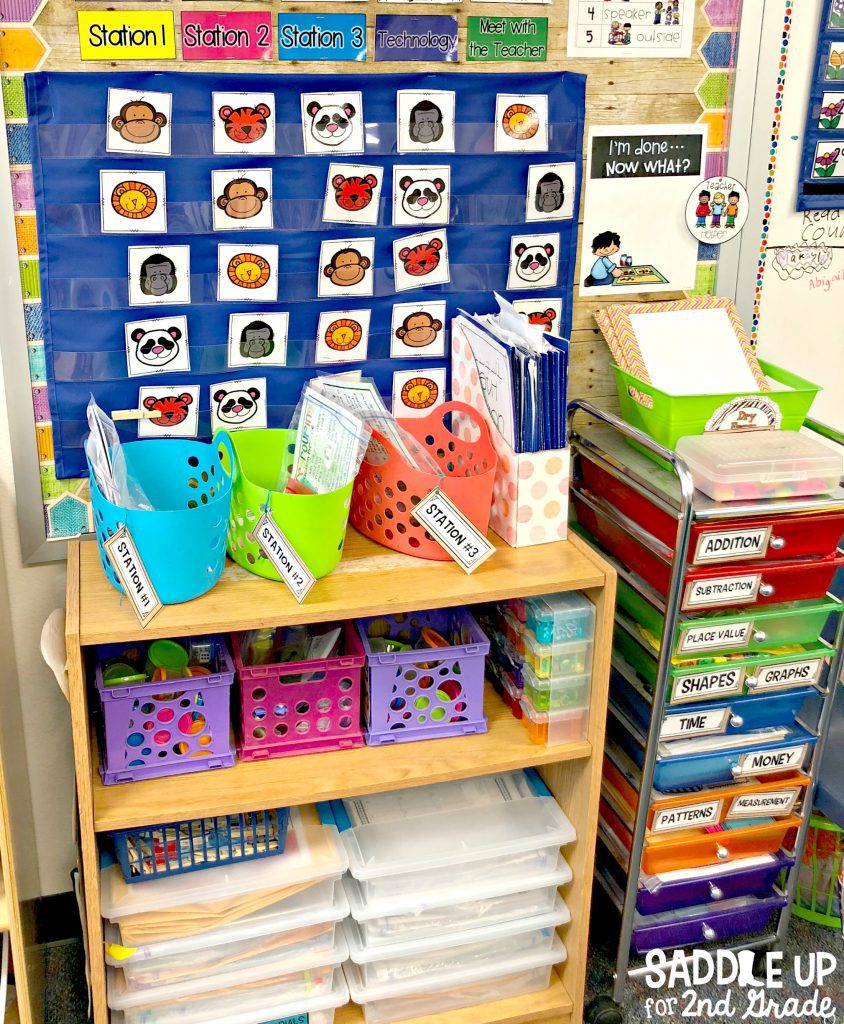
After returning from winter break, spend several days reviewing routines and procedures. Take time to review what you taught your students at the beginning of the year. Review math center rotations and rules, practice voice levels, model how to work in small groups of students, and more! Don’t forget it’s equally as important to model what incorrect behavior looks like, as well, so that students are sure to understand what is and isn’t accepted. If you are looking for small group rules, you can grab these free guided math posters here!
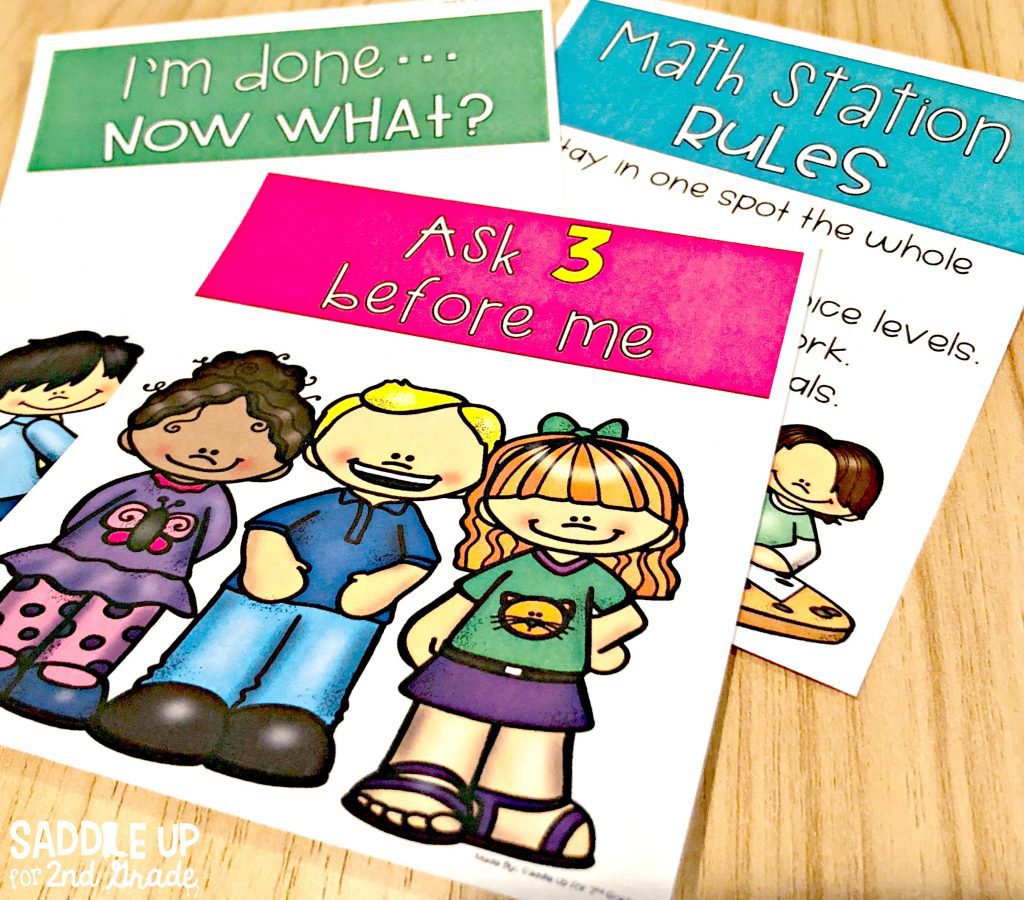
Just because you are more familiar with your students at this point in the year, don’t slack up! As the teacher, it’s vital for you to enforce the rules at all times. If students are not following the class routines and procedures, call them all together on the carpet (or in a Zoom room) to discuss and review the rules again. These systems that you put into place early on need to be reviewed in order for them to carry over into the new semester!
Like I’ve mentioned before, math centers differ from reading centers and literacy centers in that they are not always based on levels. It’s important to break down student understanding through a variety of informal and formal assessments. Once you have identified what skills and important math concepts need to be reviewed, you can then identify teaching points for your math groups.
Learning how to group students is important when it comes to math centers/stations. Changing student groups with every new concept is so important! By doing so, you will be able to identify which learners have mastered that skill and which ones need a little more attention. Being attentive to all the needs of your students and their different learning styles is crucial to their success.
Teaching in small groups does not have to be scary and can actually be quite fun with the correct understanding. Check out my Second Grade Math Station Yearly Bundle for more great math center ideas or January Boom Cards to set your students up for success!
Ready to get started with guided math today? Fill out the form below to have step-by-step directions sent straight to your inbox from my FREE GUIDED MATH EBOOK!
Feel free to pin the image below to save this post about math centers for later!
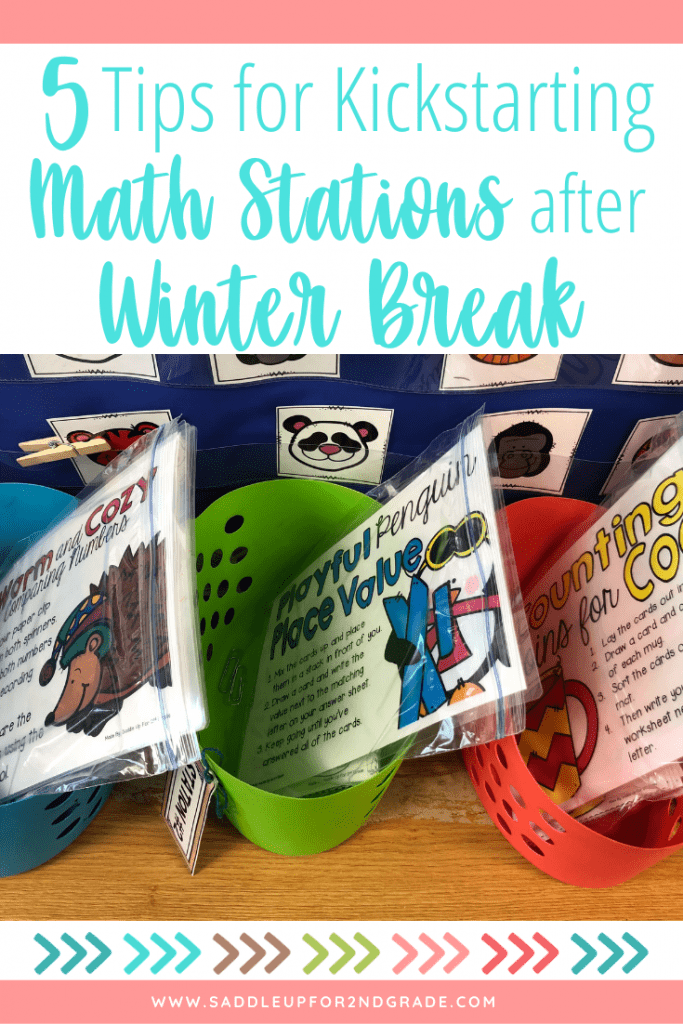
Math should be fun, not stressful. Ditch the timed math fact tests and replace them with math games that will help your students learn and retain information more effectively.
© Saddle Up for 2nd Grade • Website by KristenDoyle.co